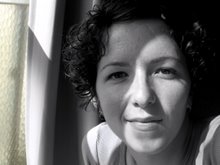From Hoi An, we took a 3 hour bus ride across the Sea Cloud Pass (a mountain pass from which one can get a terrific view... thus the name) to Hue. Hue was the capitol of Vietnam back in the 1700s. The city was founded by the Nyugen Dynasty on the northern bank of the Perfume river in central eastern Vietnam.
 The Perfume River, Hue
The Perfume River, HueThe sites we went to were all pretty far outside the city. So we had some nice rides along country rice paddy roads (below, a photograph of rural Hue from the museum at the Japanese bridge). You haven't seen a pothole 'til you've been to Vietnam. Let me just say that.

 One of the stops on our moto-tour was the most famous tomb in Hue: emperor Tu Duc (above). Tu Duc is not actually buried here. When he died, they buried him and all his treasure in a top-secret place. It was so secret that all 206 slaves who buried him here were BEHEADED. No one ever found Tu Duc's real tomb, because everyone who knew where it was died. Bad planning.
One of the stops on our moto-tour was the most famous tomb in Hue: emperor Tu Duc (above). Tu Duc is not actually buried here. When he died, they buried him and all his treasure in a top-secret place. It was so secret that all 206 slaves who buried him here were BEHEADED. No one ever found Tu Duc's real tomb, because everyone who knew where it was died. Bad planning.

 Above, a lake temple at Tu Duc's, and the mandarins that guard his tomb.
Above, a lake temple at Tu Duc's, and the mandarins that guard his tomb. Here is a lotus flower floating on a pond outside a pagoda.
Here is a lotus flower floating on a pond outside a pagoda. We stopped at a conical hat and incense making village on the way home. I talked to the woman making the hat in this photo about her work. She said it takes her an entire day to make one hat. But she makes 2,000 sticks of incense a day as well. One of these hats costs $1.
We stopped at a conical hat and incense making village on the way home. I talked to the woman making the hat in this photo about her work. She said it takes her an entire day to make one hat. But she makes 2,000 sticks of incense a day as well. One of these hats costs $1. So, that's it for Vietnam! If you want to see more photos, just let me know and I can send you the link for my online album.
So, that's it for Vietnam! If you want to see more photos, just let me know and I can send you the link for my online album.














